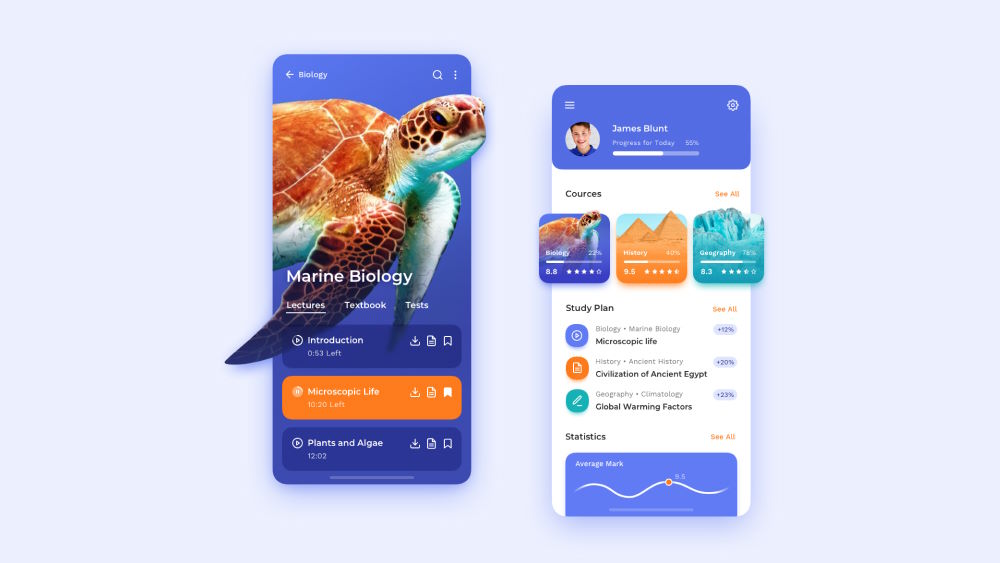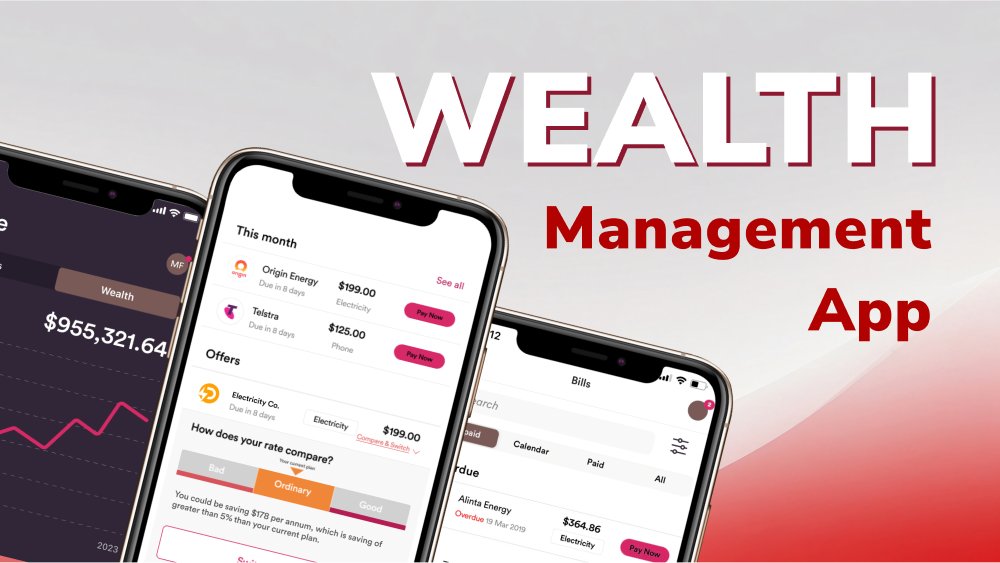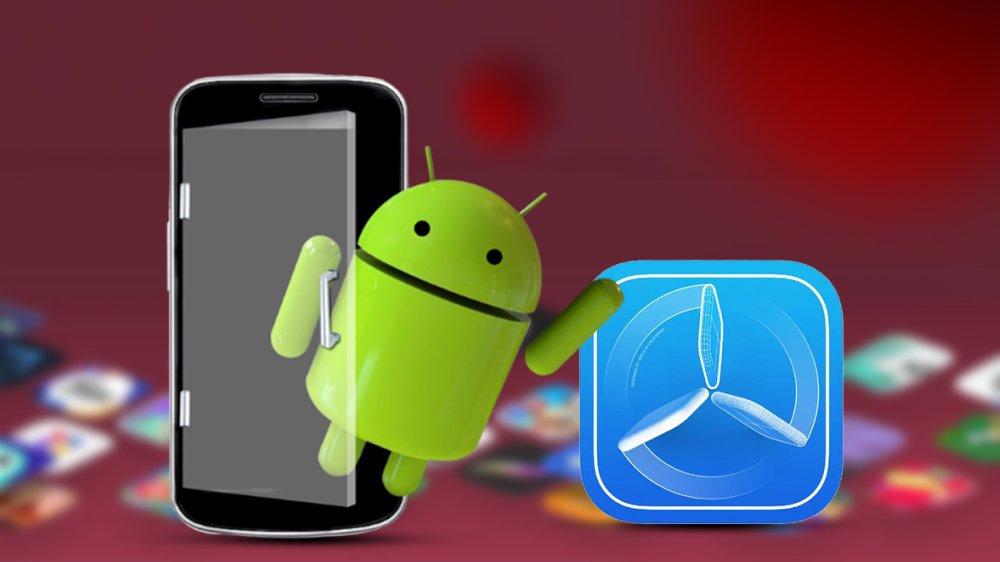
Bank Smarter, Not Harder: The Best Mobile Banking App Features
Customer satisfaction is key to any app’s success. And the best mobile banking app features elevate the customer experience.
The way we learn and teach has seen a massive transformation in the last decade alone. Driven by the emergence of mobile app development, mobile learning has exploded globally, with over a thousand educational apps downloaded to date. The catalyst? Education app development. This burgeoning field is not just shaping the learning habits of millions worldwide but also revolutionizing the entire educational ecosystem.
The education apps market is projected to expand at a CAGR of 28.61% from 2022 to 2027, primarily driven by growing government initiatives. This market is expected to continue growing, with a forecasted compound annual growth rate of 8.9% from 2023 to 2030. Statistics show students retain 25-60% more material when learning through apps compared to only 8-10% with paper-based books.
These figures underscore the profound impact of educational apps on learning habits. From language learning to homework help, education apps are becoming the go-to resource for learners of all ages. In fact, Gen Z in the United States is 107% more likely to use education apps than the wider population.
With early success, educational institutions are increasingly embracing app-centered approaches. Over 30% of high schools now use mobile apps daily in and outside the classroom. As young minds raise expectations around on-demand, self-guided learning, developers are rising to shape the future of this critical sector. Stay tuned as we unravel the fascinating journey of educational app development.

Educational apps are software products designed specifically for educational purposes, aiming to enhance learning experiences and facilitate knowledge acquisition through the use of technology. These apps are typically available on various platforms, including smartphones, tablets, and computers, making learning more engaging and accessible for learners of all ages.
Educational apps have gained immense popularity due to their ability to make learning more engaging, interactive, and accessible. These apps cater to both learners and teachers, providing a range of educational opportunities.
Let’s explore the two main types of educational apps:
Educational apps for learners are designed to facilitate knowledge acquisition and skill development in various subjects. This might include language learning apps for learning new languages, STEM learning apps for Science, Technology, Engineering, and Mathematics, coding apps for programming skills, and art and music apps for fostering creativity and artistic skills. These apps provide interactive lessons and exercises, allowing users to learn at their own pace while engaging with the content.
Some popular examples include:
On the other hand, educational apps for teachers are designed to improve teaching methods and classroom management. They include lesson planning apps that offer resources and templates, classroom management apps for tracking attendance and maintaining discipline, assessment apps for creating and grading assessments with instant feedback, and collaboration apps for communication and coordination between teachers, students, and parents regarding students’ progress.
Some popular examples include:

Educational app development services have become an integral part of the learning process, providing innovative ways to acquire knowledge and skills. These mobile apps are specifically designed for educational purposes and offer a range of features that enhance the learning experience. Here are some key features commonly implemented in the educational mobile app development process:
Gamification is the application of game design principles and elements to non-game contexts, such as education, business, health, and social causes. Educational app developers utilize gamification to make the learning process more fun, motivating, and rewarding for the users by adding elements such as points, badges, levels, leaderboards, challenges, and rewards. Gamification can also increase the user’s engagement, retention, and loyalty by creating a sense of achievement, competition, and social recognition.
Some examples of educational apps that use gamification elements are Khan Academy, an online learning platform that lets users unlock achievements, skills, and avatars for mastering various subjects, or ClassDojo, a classroom management app that lets teachers and students create and share positive feedback, rewards, and reports.
To create an educational app, incorporating real-time feedback and progress-tracking features is essential. These features provide users with immediate and continuous information, evaluation, and analysis of their learning performance, behavior, and outcomes. It enables the app to identify users’ strengths, weaknesses, and gaps, allowing for adjustments in content, difficulty, and pace to cater to their individual needs. Moreover, real-time feedback and progress tracking within the educational app can significantly boost users’ confidence, motivation, and improvement by providing them with a clear view of their achievements, goals, and areas of development.
If you want to develop educational apps that integrate real-time feedback and progress tracking, consider some examples like Quizlet, a flashcard app that lets users create and study various topics and subjects and features quizzes, games, and reports. Coursera is an online course app that lets users enroll in and complete various courses and programs and features assignments, grades, and certificates.
Social learning and collaboration are features that enable the user to interact, communicate, and cooperate with other users, such as peers, teachers, mentors, or experts. Social learning and collaboration can make the learning process more social, collaborative, and diverse for the users by exposing them to different perspectives, opinions, and experiences. Adding social learning and collaboration when developing educational apps also increases the user’s engagement, participation, and learning outcomes by creating a sense of community, belonging, and support.
Some examples that effectively use social learning and collaboration when creating educational apps include platforms like Edmodo, a social learning network that connects students, teachers, and parents and features groups, messages, and assignments. Udemy is an online learning marketplace that provides thousands of courses and instructors and features reviews, ratings, and Q&A.
Adaptive learning technology is a feature that uses artificial intelligence, data analytics, and algorithms to customize the learning content, process, and experience for each user based on their individual needs, preferences, and goals. Adaptive learning technology can make the learning process more intelligent, efficient, and effective for the users by delivering the optimal content, difficulty, and pace for each user and adapting to their changing needs, preferences, and goals. Adaptive learning technology can also increase the user’s satisfaction, retention, and achievement by providing them with a personalized and optimal learning journey.
Some successful examples of educational apps using adaptive learning technology include Socratic, a homework help app that uses AI to provide personalized answers and resources, and Smartick, a math learning app that adapts to the user’s age, level, and pace.

When creating an educational app for your own, it is important to follow a systematic approach that covers various aspects of development. Let’s explore the key steps involved:
The first step in building an educational app is to select the right platform and technology stack. This decision has a significant impact on the app’s functionality, performance, and scalability.
There are several platforms and technology stacks to choose from, including:
Once you have chosen the platform, you need to select the right technology stack. Here are some technologies that might be useful for educational app development:
The design of your educational app is crucial for capturing users’ attention and ensuring an engaging learning experience. Create a unique and visually appealing interface that reflects the educational content. Utilize attractive color schemes, high-quality graphics, and animations to make the app visually appealing.
Furthermore, focus on designing clever learning activities that keep users engaged. Incorporate interactive quizzes, puzzles, flashcards, or simulations to make learning enjoyable and immersive. Use multimedia elements like images, videos, and audio to enhance comprehension and engagement.
To prevent users from leaving, prioritize intuitive user experience (UX) design. Streamline navigation by providing clear menus, search functionality, and logical content organization. Implement features like bookmarks or progress tracking to allow users to resume their learning progress easily.
During the development phase, break down the process into smaller tasks and milestones to track progress. Utilize suitable frameworks and libraries that align with your chosen technology stack to expedite development.
Once the development is complete, comprehensive testing is crucial. Conduct functional testing to ensure all the app’s features work as intended. Additionally, perform usability testing to gather feedback on the app’s UX and make necessary improvements.
Consider offering a free trial to encourage users to explore the app’s features and content before committing to a subscription or full purchase. This allows users to experience the value of your app firsthand.
To promote your educational app, leverage advertising platforms like Google Ads or social media ads. Target your ads to specific demographics and interest groups relevant to your target audience.
Remember to gather user feedback continuously and make improvements based on market trends and user needs. Regularly update the application with new content, features, and bug fixes to keep users engaged and satisfied with their learning experience.
By following these steps and focusing on creating an effective app architecture, appealing UI/UX design, robust functionality, and strategic promotion, you can develop and launch a successful educational app for your target audience.
Investing in educational app development has the potential to revolutionize the way students learn, making education more interactive, accessible, and effective. By leveraging technology and innovative approaches, educational apps can provide personalized, engaging, and accessible educational content.
However, designing effective and secure educational software requires specialized expertise. This is where partnering with an experienced company like Orient Software can help accelerate your app project. By leveraging Orient Software’s full-stack development capabilities, you can focus on pedagogy while their team handles technical execution. We ensure apps are robust yet affordable solutions deployed on schedule.
If you have an innovative idea for an educational app but lack in-house resources, contact Orient Software today to discuss how we can help bring your vision to life. Investing in the next generation through collaborative app development has never been more impactful.
Customer satisfaction is key to any app’s success. And the best mobile banking app features elevate the customer experience.
Leverage legacy code, assure regulatory compliance and a data-driven approach are among the best tips of fintech software development.
As the digitization wave is hitting the financial sector, it is time to transform your financial plans with a suitable wealth management app!
How to make a game app? Explore genres and success stories, and get a step-by-step guide to kickstart your development journey.
Discover the best TestFlight for Android alternatives for your app testing and deployment. Stay ahead with our in-depth analysis.





